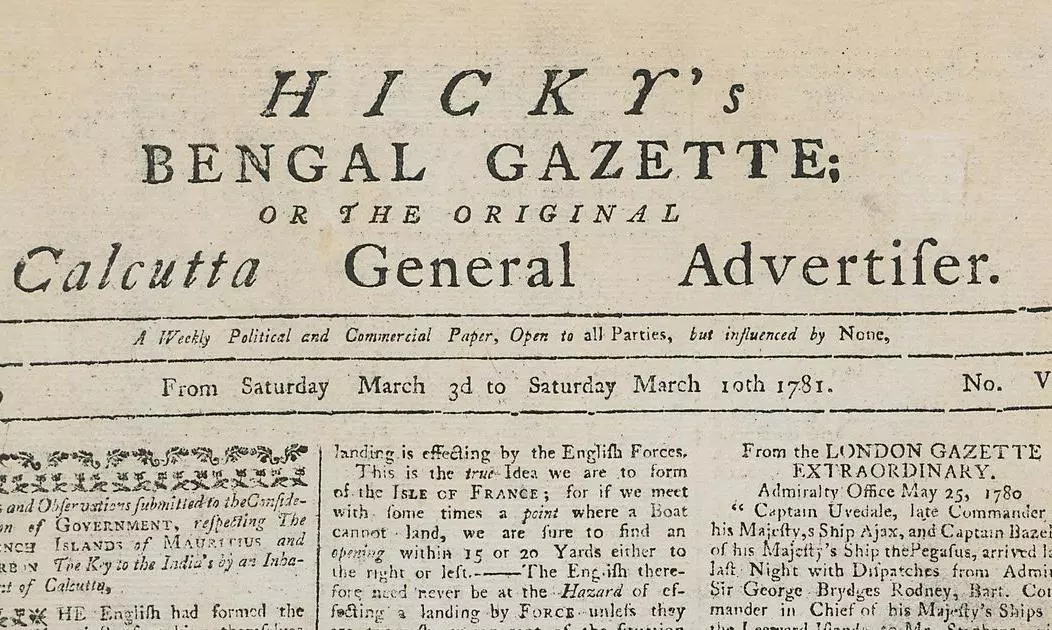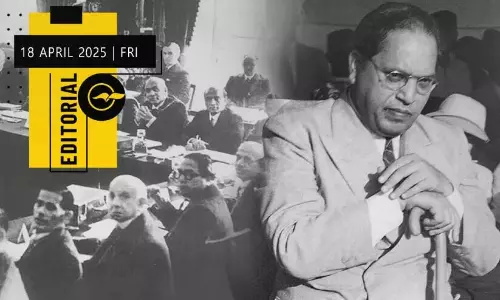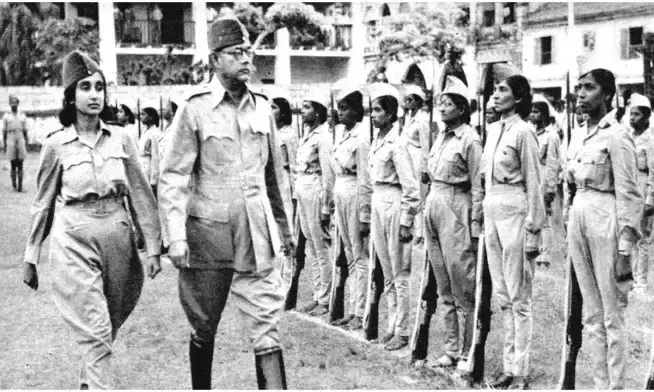

James Augustus Hicky/Wikimedia Commons[Licensed under CC BY 3.0
Remembering India's first newspaper 'Bengal Gazette', on 'National Newspaper Day'
text_fieldsLate 18th century witnessed the beginning of press in British India when Lord Warren Hastings was the Governor General. The birth of journalism in India marks the day when Bengal Gazette was published from Calcutta (today's Kolkata) as the 'National Newspaper Day'. The first English language newspaper saw the sunrise on a Saturday 29th January 1780.
It was James Augustus Hicky, an eccentric Irishman with a fire in his belly who started publishing 'Bengal Gazette' otherwise known as 'Calcutta General Advertiser'. The paper also bagged the credit of the first newspaper that was printed in Asia. It was the first editorial effort in India to expose the corruption of Warren Hastings and his government.
Bengal Gazette used to be printed once a week, every Saturday and had retailed for Re 1 with a circulation of 100 copies per week. The paper was famous for its provocative and sarcastic approach in dealing with an issue. Even though it was not an Indian who began the practice of journalism in India, people in the country were greatly inspired by Hicky's brave attitude for revealing truths. Critics embraced Bengal Gazette's functioning as 'fearless but flawed'.
'Open to all parties, but influenced by none'
India's first English language weekly carried a slogan at the top of the paper that was 'Open to all but influenced by none'. The newspaper received a great amount of criticism when it started covering issues related to politics. Initially Hicky was only concentrated in telling entertainment news and city improvement. It highlighted a neutral editorial policy in the beginning stage. But after he came to know the launch of a new rival 'India Gazette', he changed the editorial stance. Soon therafter, the Anglo-Indian newspaper created a sensation in British India's then capital. In order to emphasize that Hicky founded the newspaper, he changed its name to Hicky's Bengal Gazette on 18th November 1780. It was on this same day the rival newspaper 'India Gazette' was published.
Hicky became too political and changed the masthead of the newspaper as 'Open to all parties, but influenced by none'. He wanted to proclaim the independence of Bengal Gazette so that he had borrowed a revolutionary slogan that used to appear in American newspapers. Thereby he declared that he was accepting all political as well as controversial topics.
Also Read:Death knell for media freedom
Hickey vs Hastings
Hicky's Bengal Gazette was a strong critic of the government and administration during the colonial period. He fought against Hastings' corruption. Hicky believed that the Governor General's activities were a violation of free expression. Once Hastings sued him for libel. He was sent to jail in June 1781 and he continued to write about Hastings' administration by accusing its functioning of bribery. As a reply to this, Warren Hastings ordered to seize the printing press of Bengal Gazette and it ceased publication on 30th March 1782. Its types were seized by Supreme Court's order. After a week, the printing press was auctioned to rival newspaper 'India Gazette'.
Patriarchal stance
As was natural inthe trend of that period, Hicky employed patriarchal opinions in his newspaper. The newspaper opined that women should be chaste, submissive and faithful to their men. It discussed the role of women in pleasing their husbands and their responsibility to protect society's moral values. There were columns in Bengal Gazette suitable for quoting about 'modesty and virtuoes' in women. However, he printed a letter from his first female writer Old Nell, who was a lower-class Anglo- Indian woman. Forgetting his beliefs, Hicky allowed a woman to write in male space. He also printed articles supporting a woman's right to control her own sexual desires. He openly discussed female masturbation in articles.
Stories covered
Hicky focused on covering the stories of the lower class. He criticized the army's promotion system and the fewer promotion offered for cadets. He raised his voice for Indian sepoys. He printed letters from a subaltern perspective and made everyone believe that he upheld equality. While covering war reportage, a focus was laid on war's humanitarian tragedy. He covered the issues of the poor, when Calcutta's terrifying fires shook the city. Articles about the Bengali poor were common in his newspaper. Other areas he focused on includes road maintenance, sanitation improvement and infrastructure developments.






















